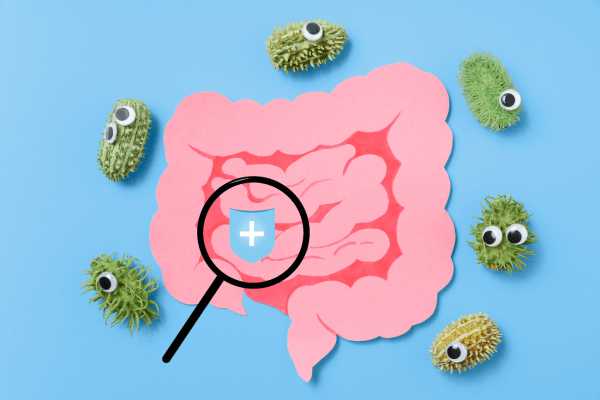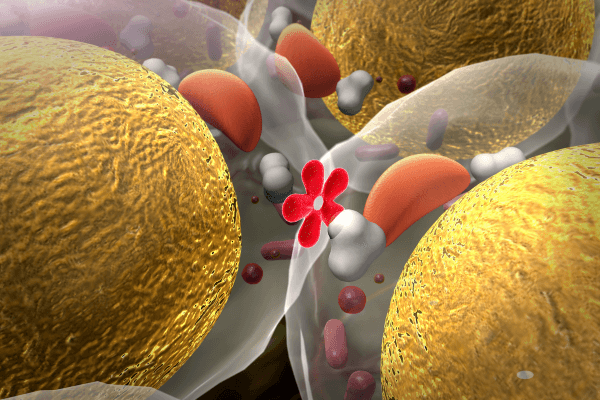Type 2 Diabetes has become a global pandemic. The prevalence of diabetes keeps growing every day. We know diabetes is treatable by making some lifestyle changes. But do you know that bad gut health can increase the risk of developing abnormal glucose homeostasis?
Research on the connection between gut flora and diabetes has gained popularity in recent years. This blog teaches us how to correct our gut health to improve diabetes.
Gut health
The human gut microbiome contains trillions of bacteria. The body uses the gut for a variety of purposes:
- Digesting food and absorbing nutrients.
- Producing important metabolites.
- Regulating immune response.
- Influencing metabolism and blood sugar control.
It is a vital organ as it is a multidirectional and communicational connection between other organs like neural, endocrine, humoral, immunological and metabolic pathways. A dysbiosis (change or alteration) in the gut microbiome influences other organs. Studies have shown that gut microbiota has a role in modulating weight gain, weight loss and maintaining energy. It is also associated with non-alcoholic fatty liver (NAFLD), inflammatory bowel diseases (IBD), hepatocellular carcinoma, cardiovascular diseases (CVD), alcoholic liver diseases and more.
However, the mechanism between the gut and organs is yet to be fully understood.
Gut Health and diabetes
Type 2 diabetes is a condition in which the body does not produce enough insulin and has adverse effects on health. A family history of diabetes, being overweight, and poor dietary habits are some of the risk factors for diabetes. Studies have shown a relation between the progression of diabetes and alteration in the gut microbiota composition.
The key factor of gut microbiota and an important factor in the development of diabetes is the diet. The gut microbiome composition can be altered by a high-fat, high-sugar diet. With the evolution in the eating pattern with fat being preferred over fibre, the microbiota is also altered.
Mechanism changes in butyrate and incretin secretions are involved in influencing microbiota and type 2 diabetes. One study showed that there was a decrease in the bacteria-producing butyrate and increased pathogens in the gut. Gut microbiota has an influence on insulin signalling, glucose homeostasis and inflammation.
A study compared gut microbiota between people with type 2 diabetes and healthy controls. Compared to the control group, it was found that the abundance of Firmicutes and Clostridium is lower in people with diabetes. Betaproteobacteria is present in high quantities in people with diabetes. The Firmicutes phylum includes bacteria that produce butyrate.
Butyrate-producing bacteria known for anti-inflammatory properties were present in lesser quantities in people with diabetes and were found in two cohort studies.
A lower abundance of Akkermansia muciniphila was found in people with prediabetes and people with newly diagnosed diabetes when analysed using 16S ribosomal DNA-based sequencing. This low abundance of Akkermansia muciniphila can be an indicator of glucose intolerance.
Dietary fibre and gut health
The risk of many health conditions is reduced with having a high-fibre diet. There are numerous advantages to consuming a high-fibre diet like good blood glucose levels, cardiovascular health, digestive function, and weight management.
The link between gut microbiome and the development of insulin resistance and type 2 diabetes is the involvement in the regulation of microbial metabolites in the host.
Short-chain fatty acids, sulphur-containing amino acids, bile acids, indole derivatives and vitamins are some of the beneficial metabolites.
Short-chain fatty acids
As a byproduct of the fermentation of indigestible carbohydrates in the colon, short-chain fatty acids (SCFA) are created in the gut.
The most abundant SCFA are
- Acetate – It is used in the peripheral tissues.
- Butyrate – It is used in the gut as the primary source of energy for colonocytes.
- Propionate – Used in the liver for the formation of new glucose.
SCFA improves metabolism and glucose balance in the adipose, muscle and liver. It binds to G protein-coupled receptors GPR41 and GPR43. GPR41 is activated and produces the hormone peptide YY, this hormone improves satiety. GPR43 is activated to increase the adipose tissue of leptin production.
One important bacteria present in the microbiome is the Prevotella, it can convert dietary fibre into short-chain fatty acids. These short-chain fatty acids have many advantages in maintaining gut composition.
Short-chain fatty acids have insulin-sensitising effects. The metabolism is enhanced when intestinal gluconeogenesis is activated. Due to the suppression of proinflammatory cytokines, short-chain fatty acids have been shown to reduce mucosal and chronic systemic inflammation.
Butyrate improves intestinal barrier function and gut integrity.
Bile acids
Secondary bile acids are produced by the intestinal microbiota through further processing of bile acids generated by the liver. Major secondary bile acids in humans are glycocholic acid, taurocholic acid, taurochenodeoxycholic acid, glycochenodeoxycholic acid.
The gut composition can be regulated by bile acids due to their antimicrobial activity. Hepatic gluconeogenesis is decreased, glycogen synthesis is increased, energy expenditure is increased and insulin secretion is improved by the bile acids.
A study found that the use of antibiotics like vancomycin in male subjects decreases the gram-positive bacteria from the Firmicutes phylum and gram-negative bacteria from the proteobacteria is increased. This vancomycin also reduces the plasma secondary bile acid and primary bile acid is increased.
The bile acid sequestrant colesevelam appears to have a counterintuitive effect on glycemic control in diabetic individuals, despite the typically positive benefits of bile acids as previously described.
Microbiome based treatments
- Diet – Diet can alter the composition and gut microbial community. A study shows that an animal-based diet decreases Firmicutes’ abundance and the production of SCFA. A meta-analysis reported dietary interventions regulate the gut microbiota and showed good glucose control but no improvement in fasting insulin, fasting blood glucose, or HOMA-IR was seen. A study showed that consumption of high fibre SCFA-producing bacteria improved HbA1c levels and partly increased the production of GLP-1.
Conclusion
Through microbial metabolites, which are engaged in a variety of metabolic pathways, gut bacteria influence the host’s glucose metabolism. Patients with type 2 diabetes and healthy people have quite different gut microbial compositions. According to numerous research, there are fewer SCFA butyrate-producing bacteria in the gut microbiota of T2D patients. Given that people with T2D typically eat a diet rich in fat, high in glycemic index, and low in fibre when compared to healthy people, this may be a reflection of dietary preferences.
One fascinating area of medical research is the possibility of using microbiome manipulation to cure diabetes. Although it is not yet a stand-alone medication, new research indicates that promoting gut health may play a significant role in the overall management of diabetes. More specialised, microbiome-based treatments might become accessible as research advances.
Kripa N,
Senior Clinical Dietitian, Simplyweight
- Faecal microbiota transplant – The process of transferring the faecal microbiome from a healthy person to the recipient is called faecal microbiota transplantation. It is shown to be effective in treating recurrent Clostridium difficile infection. A study conducted showed that there were improvements found in peripheral insulin sensitivity and an increase in butyrate-producing bacteria when the faecal microbiome was transplanted from a lean person to an adult with metabolic syndrome. More studies on this is required to fully understand the beneficial effects.
- Diet – Diet can alter the composition and gut microbial community. A study shows that an animal-based diet decreases Firmicutes’ abundance and the production of SCFA. A meta-analysis reported dietary interventions regulate the gut microbiota and showed good glucose control but no improvement in fasting insulin, fasting blood glucose, or HOMA-IR was seen. A study showed that consumption of high fibre SCFA-producing bacteria improved HbA1c levels and partly increased the production of GLP-1.
Conclusion
Through microbial metabolites, which are engaged in a variety of metabolic pathways, gut bacteria influence the host’s glucose metabolism. Patients with type 2 diabetes and healthy people have quite different gut microbial compositions. According to numerous research, there are fewer SCFA butyrate-producing bacteria in the gut microbiota of T2D patients. Given that people with T2D typically eat a diet rich in fat, high in glycemic index, and low in fibre when compared to healthy people, this may be a reflection of dietary preferences.
One fascinating area of medical research is the possibility of using microbiome manipulation to cure diabetes. Although it is not yet a stand-alone medication, new research indicates that promoting gut health may play a significant role in the overall management of diabetes. More specialised, microbiome-based treatments might become accessible as research advances.
Kripa N,
Senior Clinical Dietitian, Simplyweight













